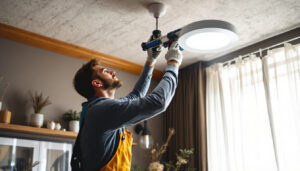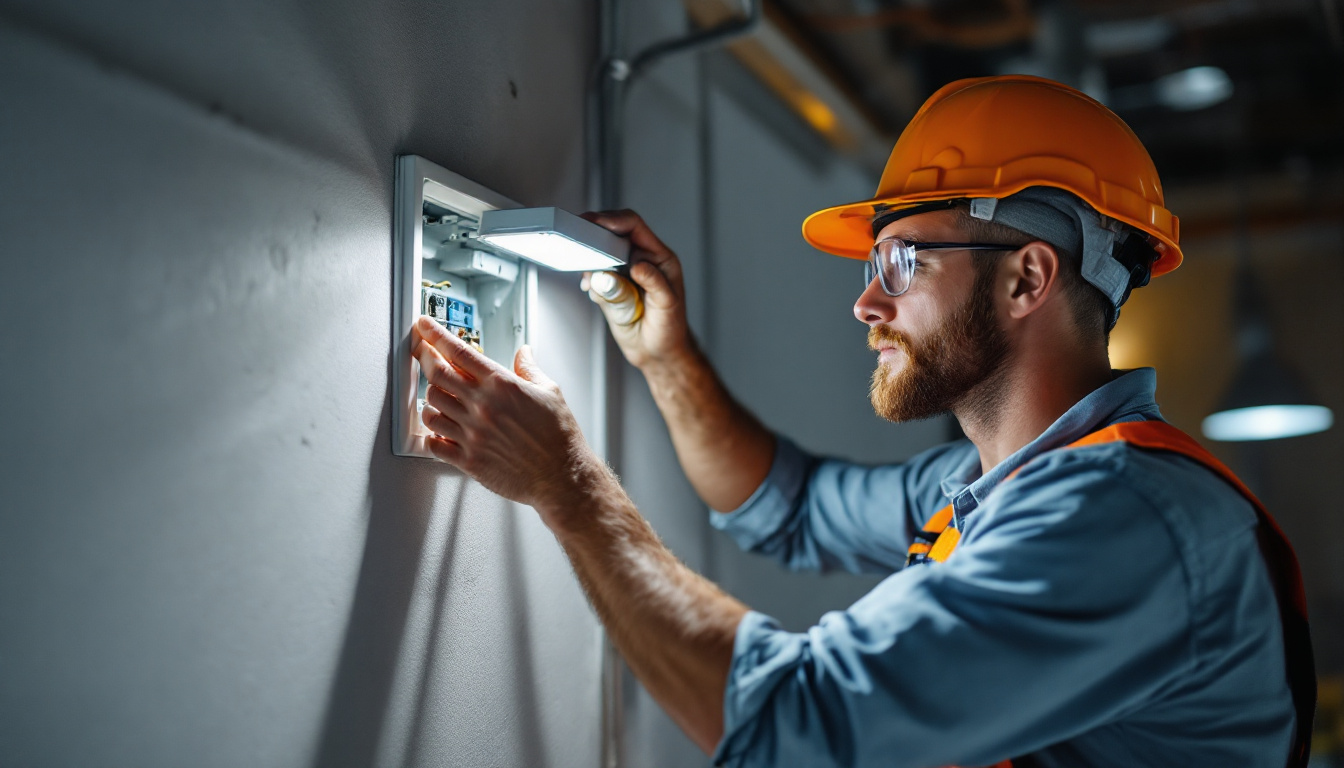

As the demand for sustainable and energy-efficient lighting solutions grows, outdoor solar flood lights have become increasingly popular among homeowners and businesses alike. However, while these fixtures offer numerous benefits, lighting contractors often encounter challenges that can lead to suboptimal installations. Understanding these common mistakes can help contractors enhance their projects, ensuring customer satisfaction and maximizing the performance of solar flood lights.
One of the most critical aspects of outdoor solar flood lights is the efficiency of their solar panels. Many contractors mistakenly assume that all solar panels are created equal. In reality, the efficiency of solar panels can vary significantly based on their technology and materials. Contractors should prioritize high-efficiency panels to ensure optimal energy absorption, especially in areas with limited sunlight.
Furthermore, it’s essential to consider the angle and orientation of the solar panels. Panels that are not positioned correctly may not receive adequate sunlight, leading to insufficient charging and poor performance at night. Contractors should assess the installation site and adjust the angle of the panels to maximize sunlight exposure throughout the day. Additionally, the choice of solar panel technology—such as monocrystalline, polycrystalline, or thin-film—can have a profound impact on efficiency. Monocrystalline panels, for instance, tend to offer the highest efficiency rates and longevity, making them a worthwhile investment for contractors looking to enhance the performance of solar flood lights in challenging environments.
Another frequent oversight is neglecting to evaluate the battery capacity of solar flood lights. The battery is responsible for storing the energy collected by the solar panels, and its capacity directly influences how long the lights will operate at night. Contractors should ensure that the battery capacity aligns with the expected usage and the wattage of the LED lights.
Inadequate battery capacity can result in lights that dim prematurely or fail to operate when needed. To avoid this issue, contractors should choose fixtures with batteries that can sustain the desired lighting duration and brightness, especially during extended cloudy periods. Moreover, the type of battery used—whether lithium-ion, lead-acid, or nickel-cadmium—also plays a crucial role in performance. Lithium-ion batteries, for example, tend to have a longer lifespan and better charge retention compared to traditional lead-acid batteries, making them a more efficient choice for solar flood lights. Understanding these nuances can help contractors make informed decisions that enhance the reliability and effectiveness of their solar lighting solutions.
Placement plays a crucial role in the effectiveness of outdoor solar flood lights. A common mistake contractors make is installing fixtures too low or too far from the intended area of illumination. Low installations may not provide adequate light coverage, while fixtures placed too far away can leave dark spots in the landscape.
To ensure optimal performance, contractors should evaluate the specific lighting needs of the area. This includes considering factors such as the height of the fixtures, the spread of light, and the distance from the target area. A well-planned layout can significantly enhance the overall effectiveness of the lighting system. Additionally, it’s important to account for potential obstructions, such as trees or buildings, that may block sunlight during the day. By conducting a thorough site analysis, contractors can identify the best locations for fixtures to maximize exposure to sunlight and ensure that the lights will function at their best during the night.
Ground conditions can greatly affect the performance and longevity of outdoor solar flood lights. Contractors often overlook the importance of a stable and secure mounting surface. Uneven or unstable ground can lead to misalignment of the fixtures, which may compromise their ability to capture sunlight effectively.
Before installation, it is advisable to assess the terrain and make necessary adjustments to ensure that the fixtures are securely mounted. This might involve leveling the ground or using appropriate mounting hardware to stabilize the lights. Taking the time to prepare the installation site can prevent future issues and enhance the durability of the fixtures. Moreover, contractors should consider the soil type and drainage patterns in the area. For instance, sandy or loose soil may require deeper anchoring, while clay soils may retain moisture, potentially leading to rust or corrosion of the fixtures. Understanding these factors can lead to a more robust installation that withstands the test of time and environmental conditions.
Lighting contractors must be aware of local regulations and codes that govern outdoor lighting installations. A common mistake is failing to research these guidelines, which can lead to non-compliance and potential penalties. Local authorities may have specific requirements regarding light pollution, fixture brightness, and placement that contractors must adhere to.
Before proceeding with an installation, it is crucial to consult local regulations to ensure compliance. This not only protects the contractor from legal issues but also promotes responsible lighting practices that benefit the community.
In addition to local regulations, environmental considerations should also be a priority. Some contractors may overlook the impact of outdoor lighting on wildlife and natural habitats. Bright lights can disrupt local ecosystems, particularly for nocturnal animals.
Contractors should consider using fixtures with adjustable brightness settings or motion sensors to minimize light pollution. By being mindful of environmental impacts, contractors can contribute to sustainable practices while meeting client needs.
When selecting solar flood lights, contractors often make the mistake of choosing fixtures based solely on their appearance or price rather than their performance specifications. Inadequate light output can lead to unsatisfactory results, leaving clients disappointed with the final installation.
Contractors should carefully evaluate the lumen output of the fixtures and ensure they meet the lighting requirements of the specific area. Understanding the difference between lumens and watts is essential; lumens measure brightness, while watts measure energy consumption. Selecting fixtures with appropriate lumen output for the intended application is crucial for achieving the desired lighting effect.
Outdoor solar flood lights are exposed to various weather conditions, making durability a key factor in their selection. Contractors sometimes overlook the importance of choosing fixtures made from high-quality materials that can withstand harsh environments. Fixtures that are not weather-resistant may deteriorate quickly, leading to frequent replacements and increased costs.
To avoid this pitfall, contractors should opt for fixtures with robust construction, such as those made from corrosion-resistant materials. Additionally, checking for warranties and manufacturer guarantees can provide added assurance of durability and performance.
Another common mistake made by lighting contractors is underestimating the maintenance needs of solar flood lights. While these fixtures are generally low-maintenance, they still require periodic checks to ensure optimal performance. Neglecting maintenance can lead to decreased efficiency and shortened lifespan.
Contractors should educate clients about the importance of regular maintenance, including cleaning solar panels, checking battery health, and ensuring that fixtures remain unobstructed by debris or vegetation. Providing clients with a maintenance schedule can help prolong the life of the lighting system and enhance customer satisfaction.
Seasonal changes can impact the performance of outdoor solar flood lights, yet many contractors fail to account for these variations. For instance, during winter months, shorter days and increased cloud cover can reduce the amount of sunlight available for charging. As a result, lights may not operate as effectively.
Contractors should advise clients on how to adjust the settings or positioning of their solar flood lights according to seasonal changes. This may include repositioning fixtures to capture more sunlight or adjusting brightness settings to accommodate longer nights. By proactively addressing seasonal considerations, contractors can help ensure consistent performance throughout the year.
Effective communication with clients is essential for successful lighting projects. Contractors often make the mistake of not thoroughly discussing the capabilities and limitations of solar flood lights with their clients. This can lead to unrealistic expectations and dissatisfaction with the final results.
Contractors should take the time to explain how solar flood lights work, including factors such as charging times, battery life, and potential performance variations based on weather conditions. Clear communication can help set realistic expectations and foster a positive relationship between the contractor and the client.
After installation, clients may not fully understand how to operate and maintain their new solar flood lights. Contractors sometimes neglect to provide comprehensive user instructions, leaving clients unsure about the best practices for optimal performance.
Providing detailed user manuals or conducting a brief orientation can empower clients to take full advantage of their solar flood lighting systems. This not only enhances customer satisfaction but also reduces the likelihood of issues arising from improper use or maintenance.
Outdoor solar flood lights offer a sustainable and energy-efficient lighting solution, but common mistakes made by lighting contractors can hinder their effectiveness. By understanding the intricacies of solar technology, ensuring proper installation, adhering to local regulations, selecting appropriate fixtures, and maintaining open communication with clients, contractors can significantly improve their projects.
Ultimately, avoiding these pitfalls can lead to enhanced performance, increased customer satisfaction, and a solid reputation in the competitive lighting industry. By prioritizing education and attention to detail, lighting contractors can successfully navigate the challenges associated with outdoor solar flood light fixtures and deliver exceptional results to their clients.
Don’t let common mistakes compromise your lighting projects. Choose LumenWholesale for your outdoor solar flood light needs and benefit from our commitment to quality and value. Our spec-grade lighting products are designed to meet the highest industry standards, ensuring that you deliver reliable and high-performance lighting to your clients. With unbeatable wholesale prices and free shipping on bulk orders, you can trust us to provide the best lighting solutions without hidden fees or compromises. Elevate your lighting projects by visiting Wholesale Lighting at the Best Value and experience the LumenWholesale difference today.

Explore the transformative impact of replacing can lighting in modern interiors.

Discover why lighting contractors should prioritize the innovative A 19 bulb in their projects.

Discover essential tips and common mistakes to avoid when selecting and installing electric box covers.

Illuminate your projects with expert insights! Discover essential tips and considerations for lighting contractors working with outdoor string lights, from installation techniques to design trends, ensuring every space shines brilliantly..
Get notified when NEW deals are released.
Optimize your budget with wholesale discounts.
Only top-quality, specification-grade lighting products.
No additional costs at checkout - what you see is what you pay.
We understand the unique needs of contractors.